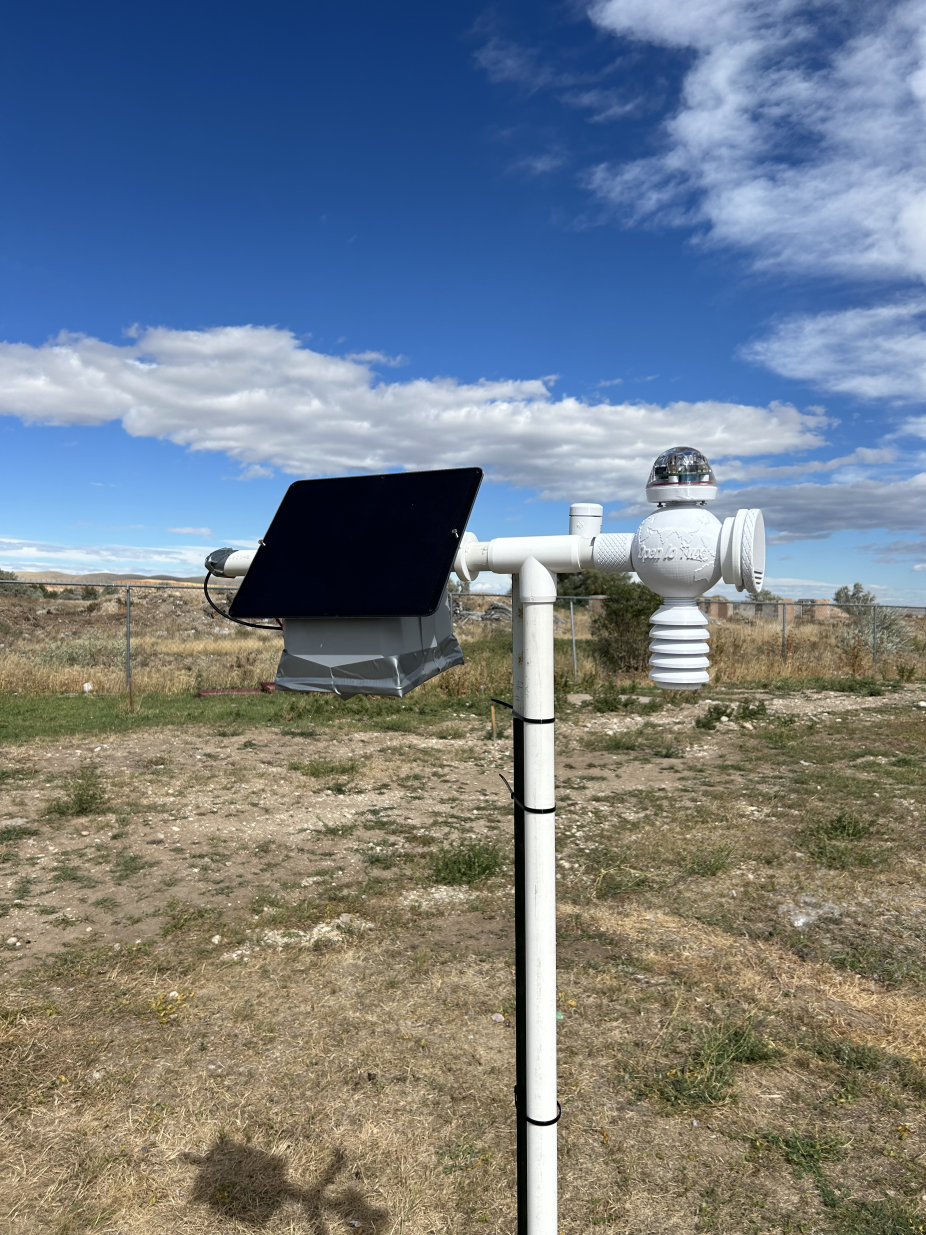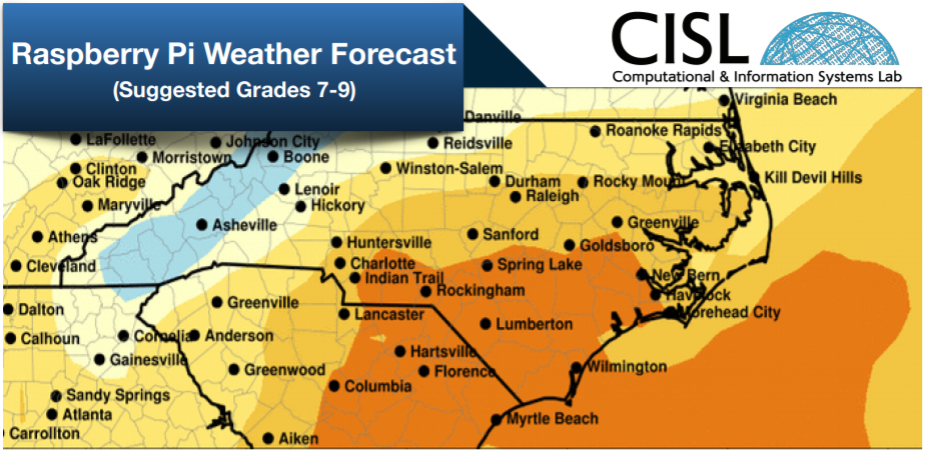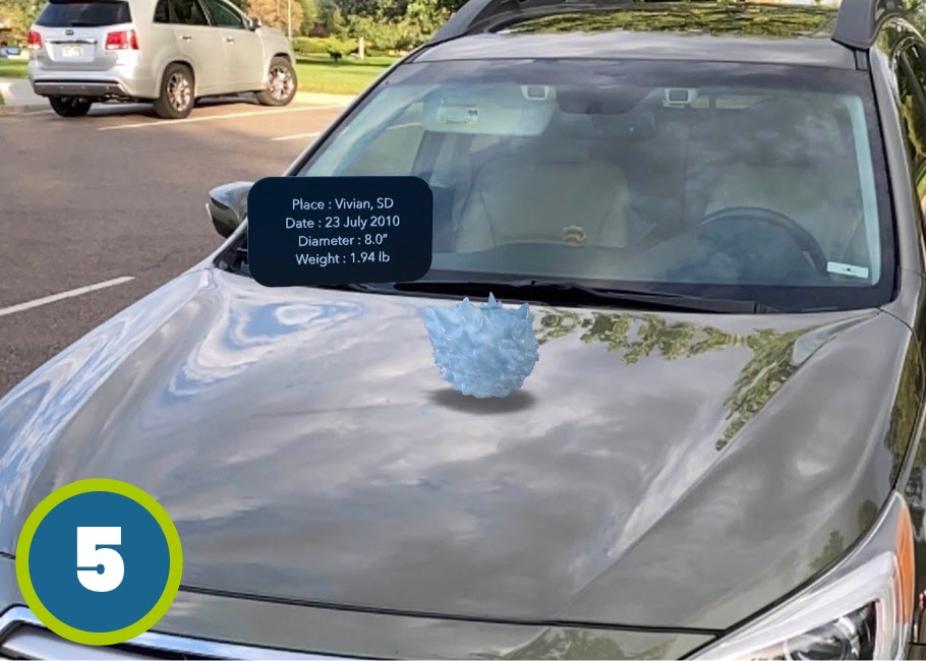Resources for educators and students
Learning resources
We provide educators, students, and the public with educational tools that teach about the importance of high-performance computing (HPC) in our pursuit of answering questions about our world. These open-source learning opportunities aid in the broadening of our science community by making HPC approachable and fun.
Are you an NSF NCAR scientist who would like one of your projects to be featured as open-source educational material on our site? Reach out to outreach@ucar.edu for more information.
NCAR-Wyoming Supercomputing Center
Visit the NCAR-Wyoming Supercomputing Center (NWSC) to learn about the power of supercomputing and how we use it.
See NWSC Visitor Center for how to schedule a visit or virtual tour.
3D-Printed Weather Station

Open Internet-of-Things Weather (openIoTwx) Station
This weather station is a low-cost, modular, extensible, and pint-sized 3D-printed weather station, based on Internet-of-Things (IoT) technology. Become part of our open-source community to build, contribute, and deploy OpenIoTwx!
In a classroom, students can gain practical experience assembling the weather station using step-by-step videos, which complement our written and photographic instructions. These tutorials offer a visual guide to help you navigate the assembly process, providing helpful tips and insights along the way.
Students will collaborate to piece together the components and troubleshoot any challenges that they may encounter. Through this process, students will familiarize themselves with the various sensors and their roles in measuring various weather conditions, such as temperature, air quality, precipitation, and ultraviolet radiation.
Visit our GitHub website to learn more about how to build your own weather station!
Meteo AR / Meteo VR

Meteo AR is an augmented reality application that displays interactive virtual objects, in this case an animated globe.
Meteo AR is an augmented reality (AR) application (download here) that displays interactive virtual objects – like an animated globe or a hurricane, for example – over real world imagery that is captured by your mobile device's camera.
The app works with the NSF NCAR “science cube” or the downloadable science sheets. They include background information about topics like El Niño, hurricanes, and climate change to help you understand and interpret what you are seeing.
Meteo VR is a virtual reality (VR) application that works with inexpensive devices like Google Cardboard to turn your mobile phone into a 3D VR platform for exploring geoscience data. Google Cardboard is available for purchase from many online retailers. Search “Google Cardboard.”
Raspberry Pi Weather Forecast
Also known as WRF on Pi, the goal of this project is to run a real weather model on your Raspberry Pi computer and make a weather forecast. You will run the simulation for the days you want, where you want, visualize the output, and make a forecast.
By working through this module, you will gain an understanding of how a weather forecast is made, how a meteorologist adds “value” to the forecast, and you will learn some of the limits and shortcomings of some of our latest weather models. Get instructions here.

Machine learning and deep learning
These resources are appropriate for high school learners and other who have some coding experience.
Machine Learning in Python for Environmental Science Problems
Want to learn more about machine learning in Python? This AMS short course shows you everything you need to know with both CPU-enabled and GPU-enabled approaches.
Deep Learning Tutorial
This tutorial is about using deep neural networks to predict intense rotation near the surface of thunderstorms.
NSF NCAR Science Augmented Reality
What is Augmented Reality (AR)?
AR is an environment in which real-world objects and virtual objects are presented together within a single handheld display (e.g., tablet computers, smartphones) or a head-mounted display (HMD). The virtual objects are positioned in 3-D space and mimic real objects, presenting a simple and intuitive environment to explore the models.
Visit the NSF NCAR Science in Augmented Reality website to explore how hurricanes and typhoons move, and what it would look like to have a supercomputer or observatory inside of your home!

Sample viewing of the Vivian hailstone using CISL's Augmented Reality tool
Did you know... the largest recorded hailstone to ever fall in the United States was collected from Vivian, South Dakota, in July 2010. The hailstone weighed nearly 2 pounds and was 8 inches in diameter. It's hard to even wrap your head around how big it was - but thanks to an augmented reality tool created by CISL, it's a lot easier than it used to be. Use your phone to place the Vivian hailstone on your desk, in your cereal bowl, on your cat, or anywhere you can see with your phone's camera! Visit the NSF NCAR AR website to get started.
Additional resources
Check out the Learning Center and the CISL YouTube channel for a variety of programming tutorials, seminars, and other HPC learning materials.